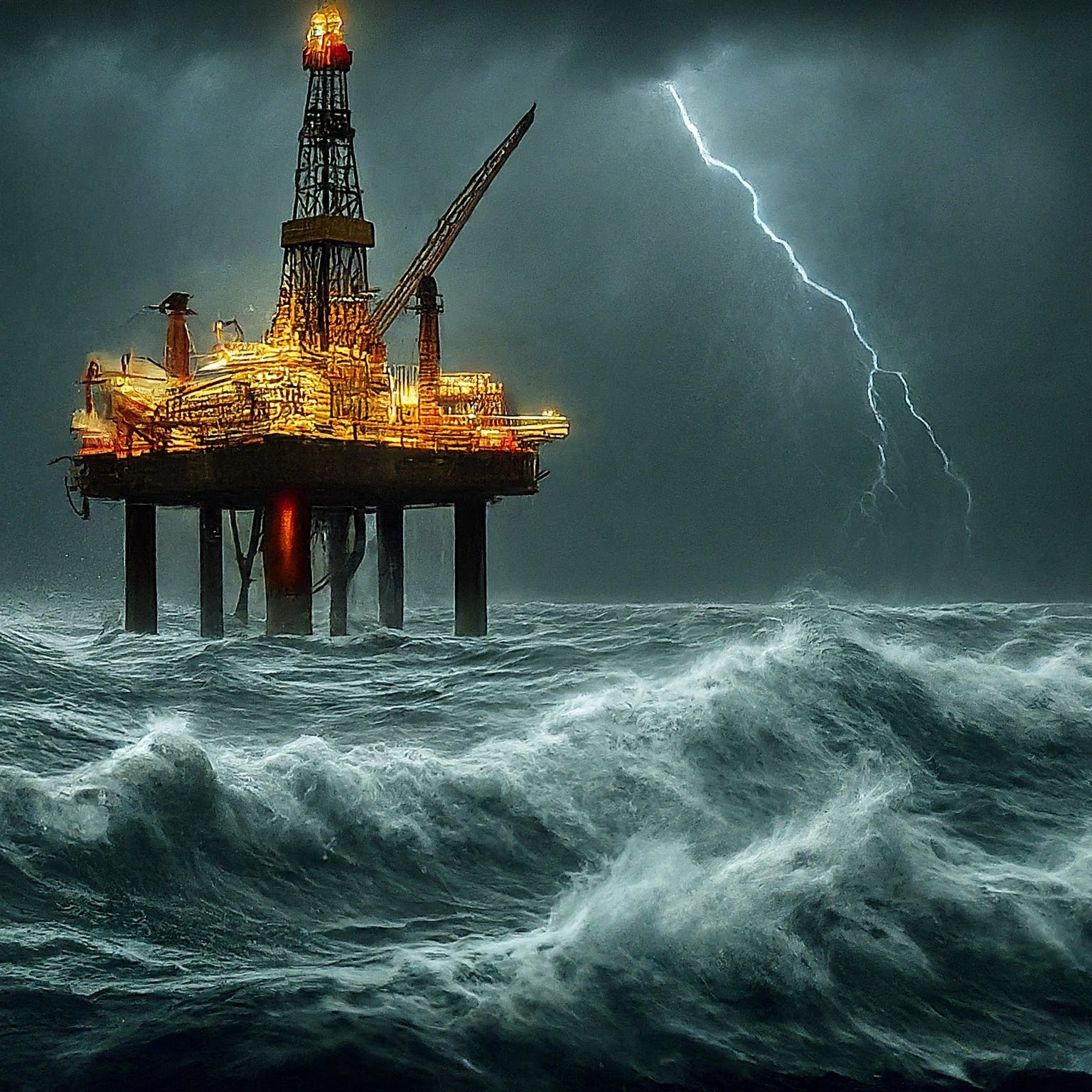A Deadly Blaze: Fires on U.S. Offshore Oil Rigs
A Deadly Blaze: Fires on U.S. Offshore Oil Rigs
When we think of oil rigs, we often imagine towering structures surrounded by endless waves, silently extracting the lifeblood of the modern world. What we don’t often think about are the dangers that come with this process — particularly fires and explosions. These incidents are not only frequent but also the number one cause of accidents in the oil and gas industry.

Let’s take a look at one such incident, examine why fires are such a prevalent risk, and explore what can be done to prevent future disasters.
The Anatomy of a Fire on an Oil Rig
In 2022 alone, there were 126 reported fires on U.S. offshore oil rigs. These incidents can happen in the blink of an eye, often starting small and escalating into devastating infernos. But how does a fire ignite in such a well-regulated environment?
On an offshore oil rig, the risks of fire are numerous:
- Flammable materials: Oil and gas are inherently flammable. A small spark can ignite vapors or leaks, triggering a chain reaction.
- High-pressure systems: The high-pressure systems used in drilling can create volatile conditions where equipment failure can lead to leaks of gas or oil.
- Electrical malfunctions: Offshore rigs are essentially floating factories, with miles of electrical wiring. Any fault in the system can result in sparks or short circuits that ignite nearby flammable materials.
In many cases, fires on rigs start due to a combination of these factors. For example, a piece of malfunctioning equipment might cause a gas leak. If that gas comes into contact with an electrical spark, the results can be catastrophic.
Case Study: The Piper Alpha Disaster
One of the most infamous offshore oil rig fires occurred in 1988 with the Piper Alpha disaster. Although this happened in the North Sea, its lessons are highly relevant to U.S. offshore rigs. The fire on Piper Alpha started due to a gas leak and escalated when safety systems failed. A series of explosions followed, killing 167 crew members and becoming the deadliest offshore oil disaster in history.
The Piper Alpha disaster highlights how quickly a fire on an oil rig can spiral out of control and the importance of having effective fire suppression systems and emergency protocols in place.
How Fires Are Contained (Or Not)
Modern oil rigs are equipped with advanced fire suppression systems, but even these systems have limitations. These systems include:
- Automatic sprinklers: These systems are designed to douse a fire quickly, but they may not be sufficient if the fire spreads too rapidly or occurs in a location with limited coverage.
- Gas detection systems: These alert the crew when flammable gases are detected, giving them a chance to evacuate before a fire breaks out. However, false alarms and system malfunctions can undermine their effectiveness.
- Emergency shutdown procedures: Rigs have protocols in place to quickly stop the flow of oil and gas in the event of a fire. However, as seen in the Piper Alpha disaster, these procedures don’t always work as intended under extreme conditions.
In some cases, it’s human error or negligence that causes these systems to fail. For example, a delay in responding to an alarm or a failure to maintain safety equipment can turn a minor fire into a disaster.
The Aftermath of an Offshore Rig Fire
When a fire breaks out on an offshore rig, the consequences can be devastating. In addition to the risk of injury or death for the crew, there’s also the environmental impact. Oil spills are a common side effect of offshore rig fires, leading to pollution that can affect marine life for years to come.
One of the worst offshore oil spills occurred in 2010 with the Deepwater Horizon explosion in the Gulf of Mexico. The fire, which started after a blowout, killed 11 workers and resulted in the release of millions of barrels of oil into the ocean. The environmental damage was catastrophic, affecting wildlife, coastlines, and industries dependent on the Gulf for years after the accident.
Preventing Future Fires: What Needs to Change
While the oil and gas industry has made significant improvements in safety over the years, fires continue to be a leading cause of accidents. There are several steps that can be taken to prevent future incidents:
-
Stricter Safety Regulations: Ensuring that all rigs comply with the highest safety standards is crucial. This includes regular inspections, proper maintenance of equipment, and updated fire suppression systems.
-
Improved Training: Many fires are caused by human error. Providing more comprehensive training to rig workers, particularly in emergency response and fire prevention, can reduce the risk of accidents.
-
Technology Upgrades: Advancements in detection technology and automation can help prevent fires before they start. For instance, drones and AI can monitor rigs for signs of leaks, corrosion, or other hazards.
-
Culture of Safety: Ultimately, preventing fires comes down to creating a culture where safety is prioritized over productivity. When workers feel empowered to report safety concerns and take action without fear of retaliation, the entire rig becomes a safer place.
Conclusion: A Fiery Future?
Fires on U.S. offshore oil rigs are a serious issue, but they’re not inevitable. With the right technology, training, and culture, these disasters can be minimized — though they may never be fully eliminated. As long as we rely on oil, the risk of accidents will remain. The key is making sure that when a fire does start, it’s contained quickly and doesn’t escalate into a catastrophe.
In the meantime, every rig worker who boards a helicopter bound for an offshore platform knows the risks they face — and every spark is a reminder of the high-stakes game they play.